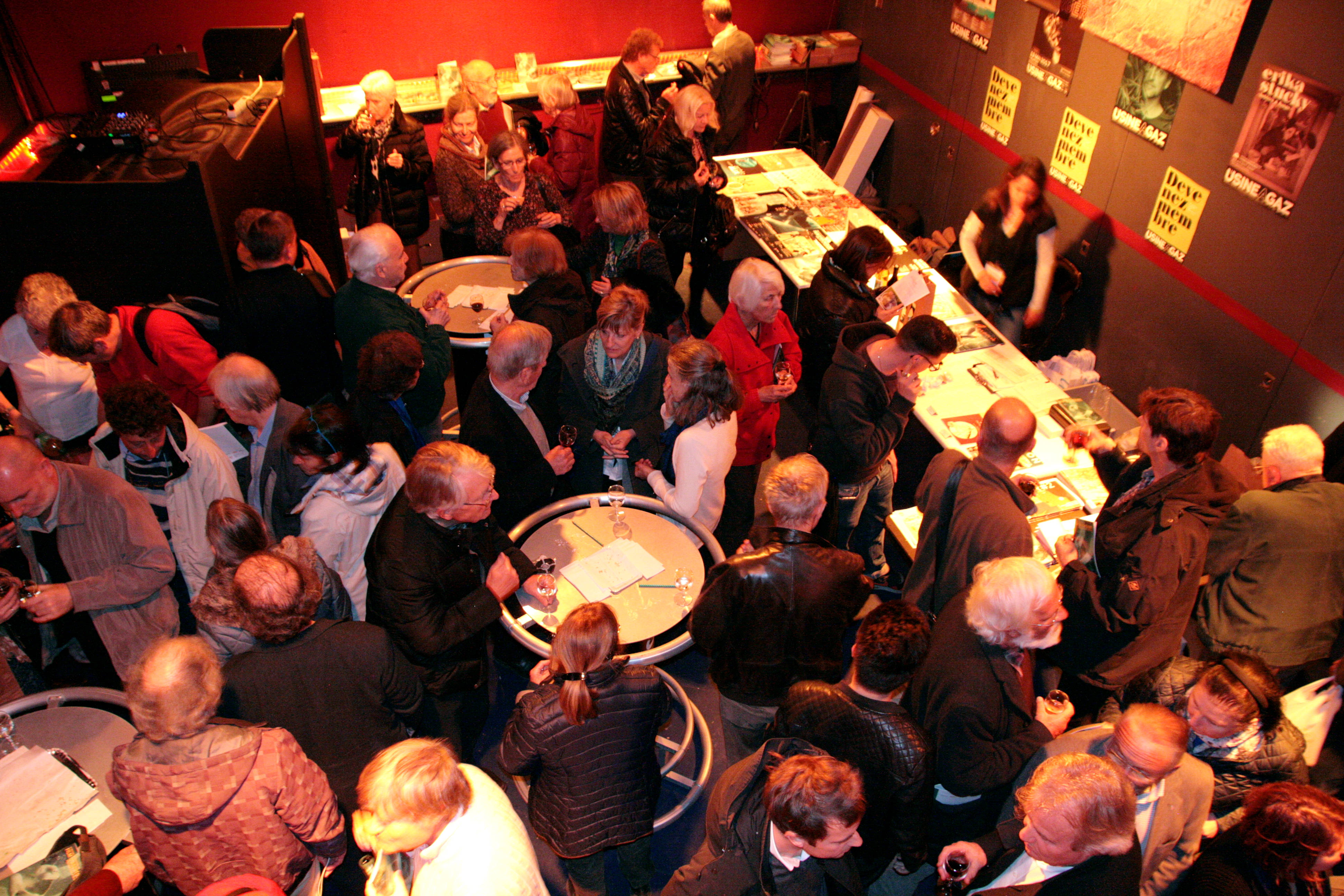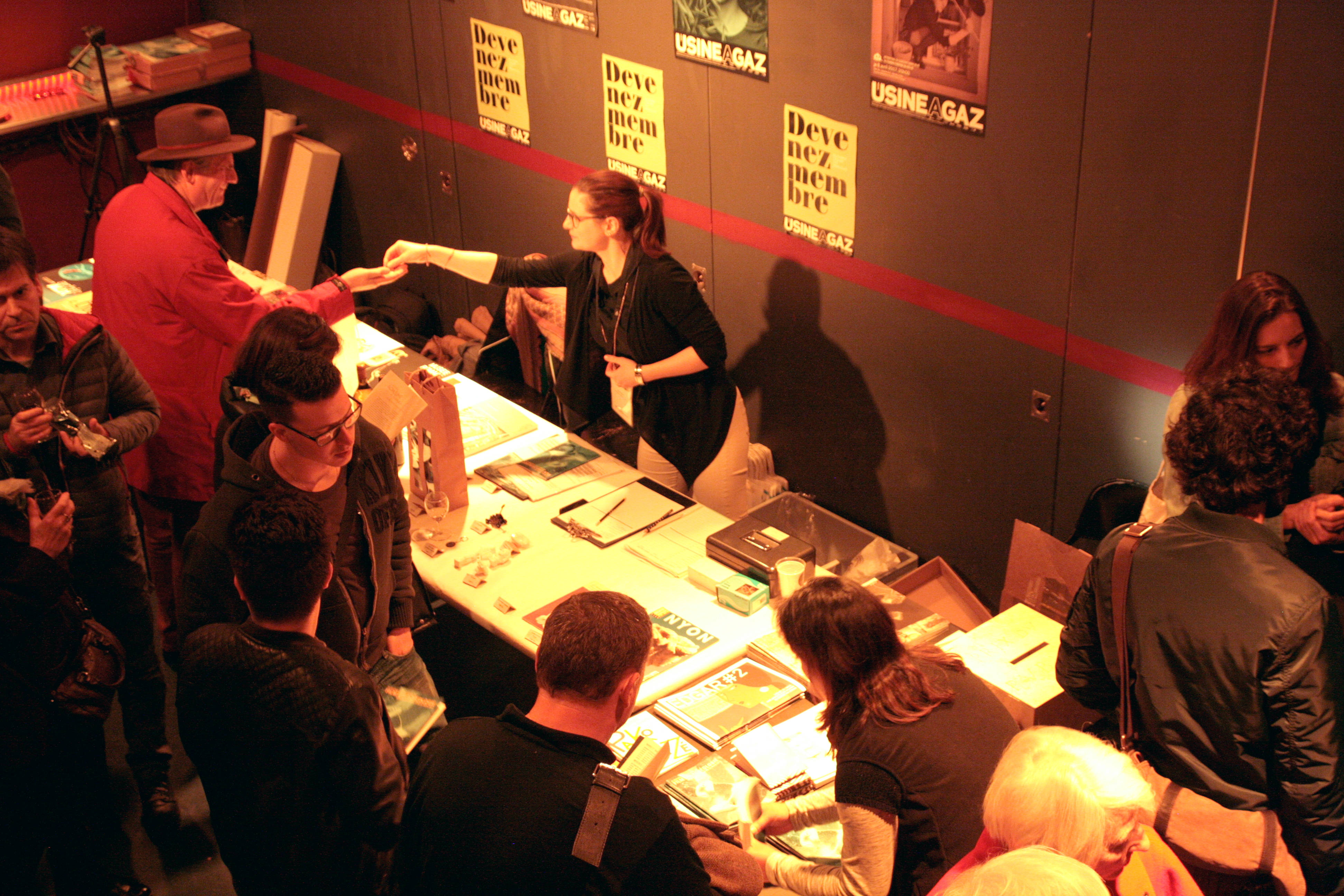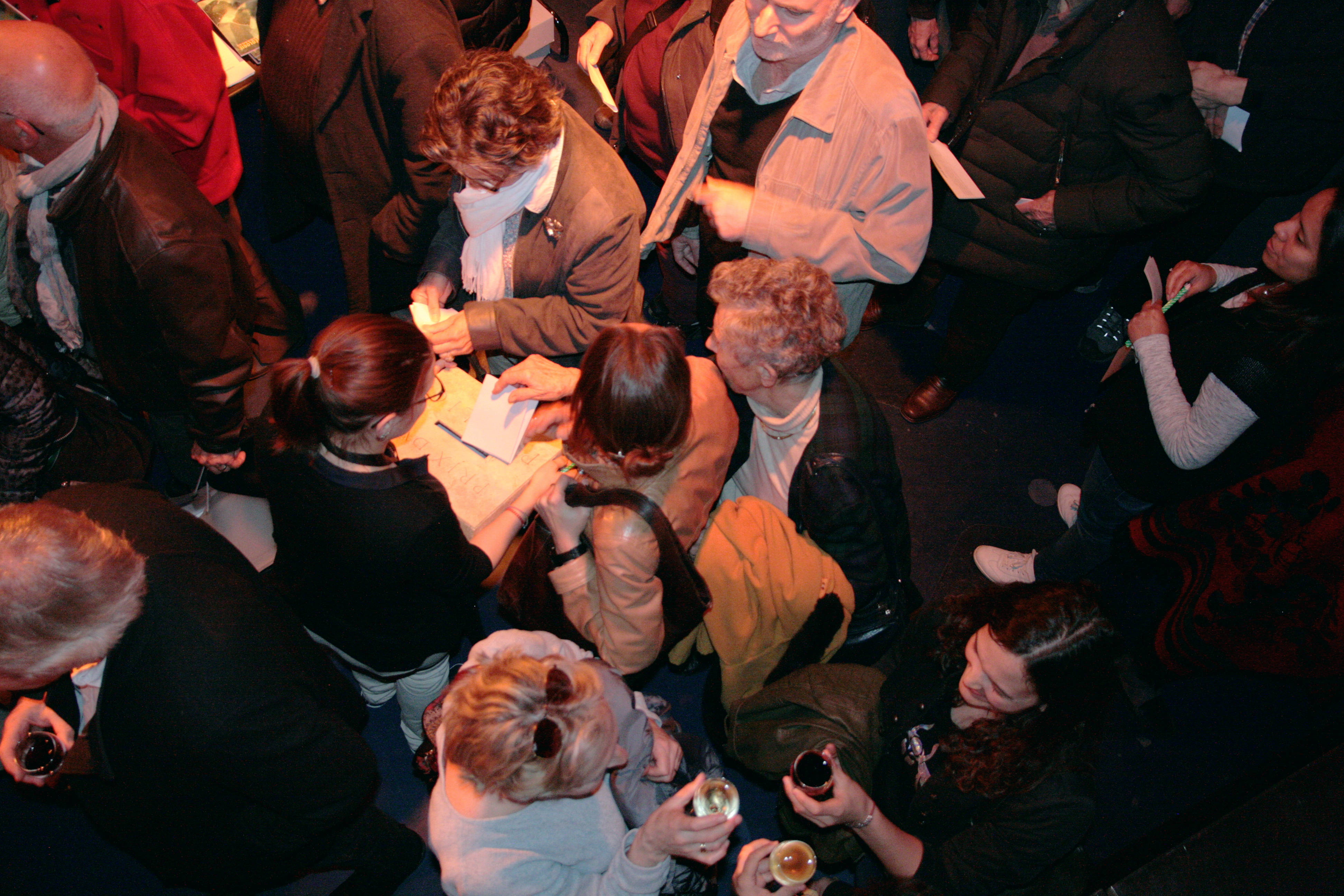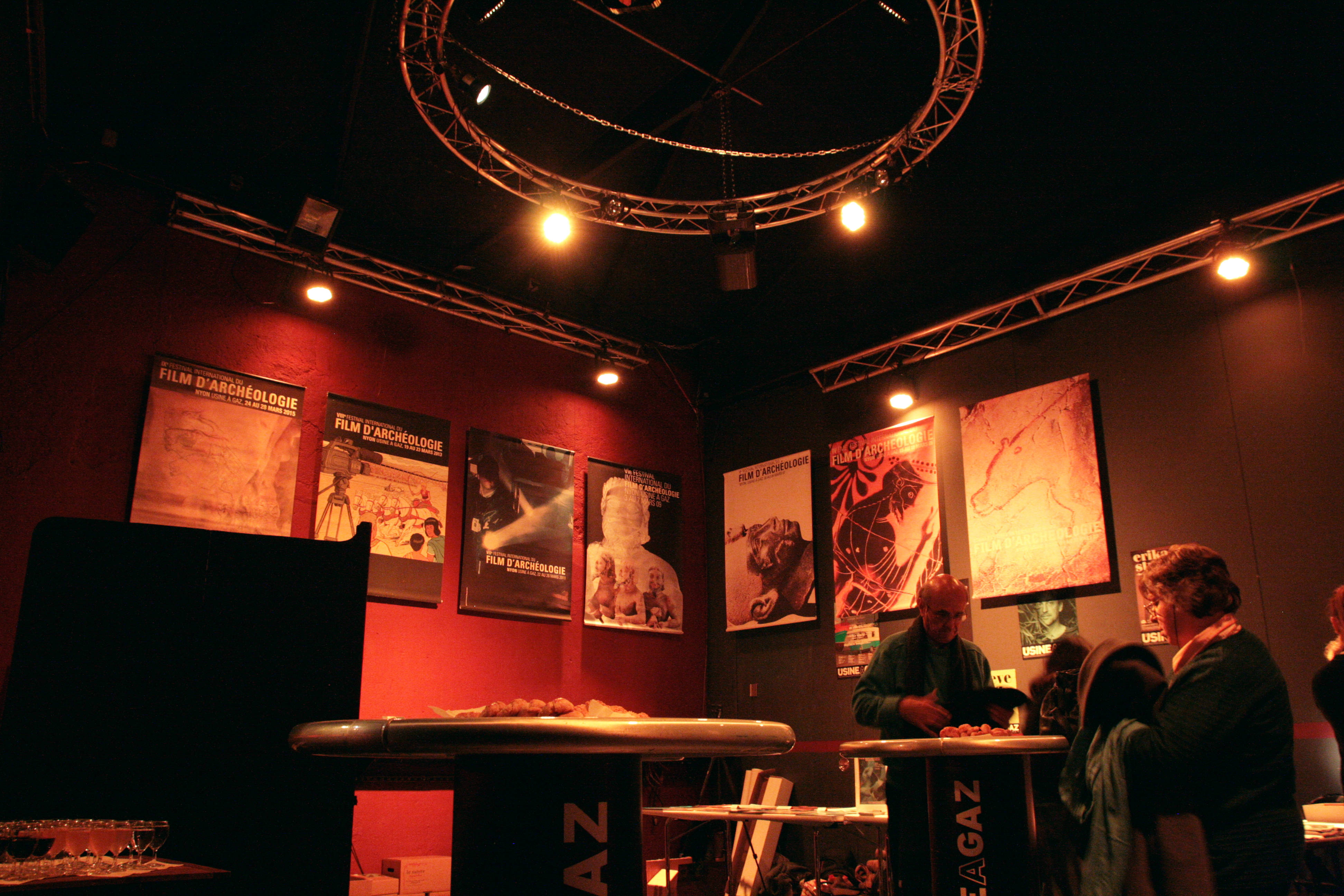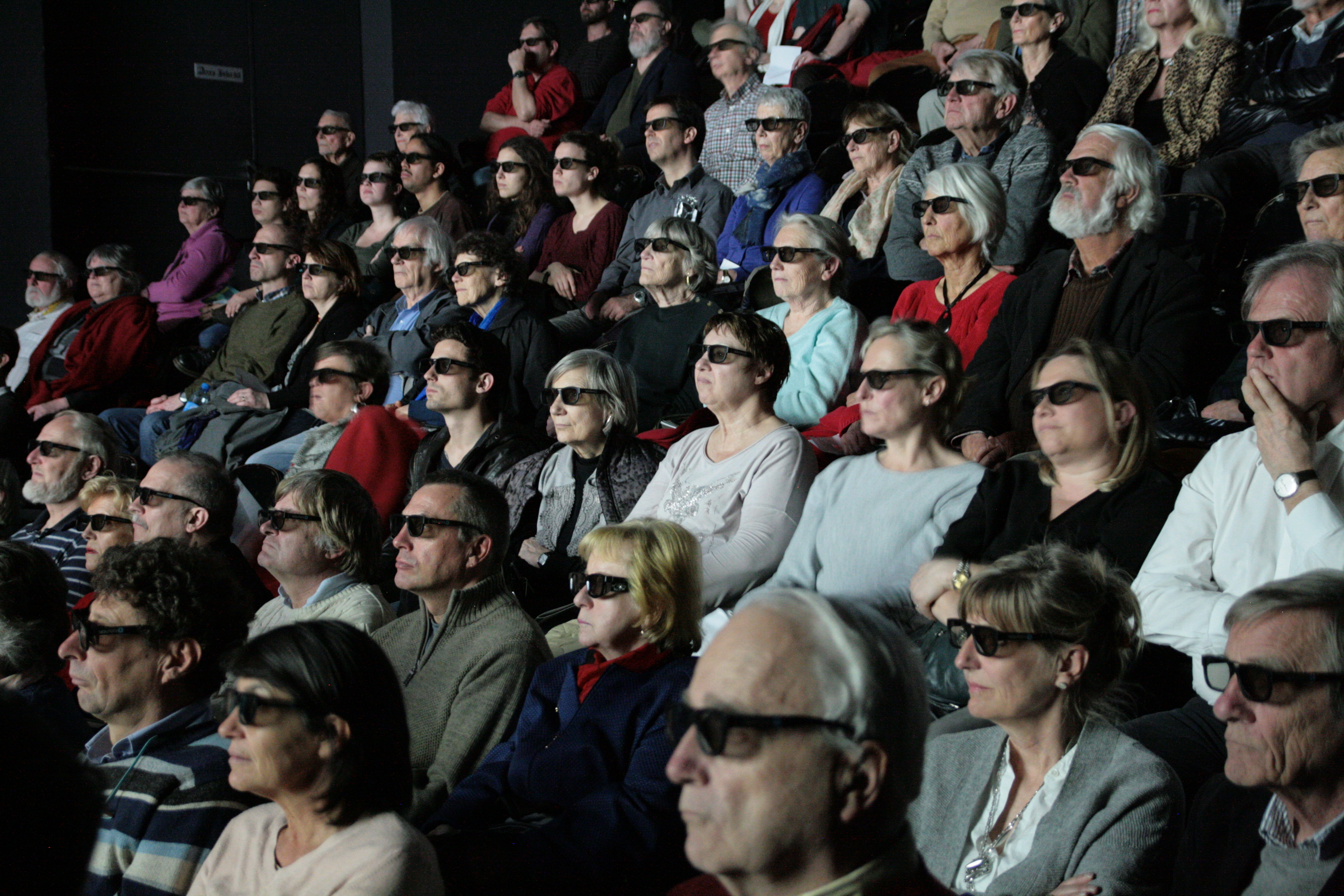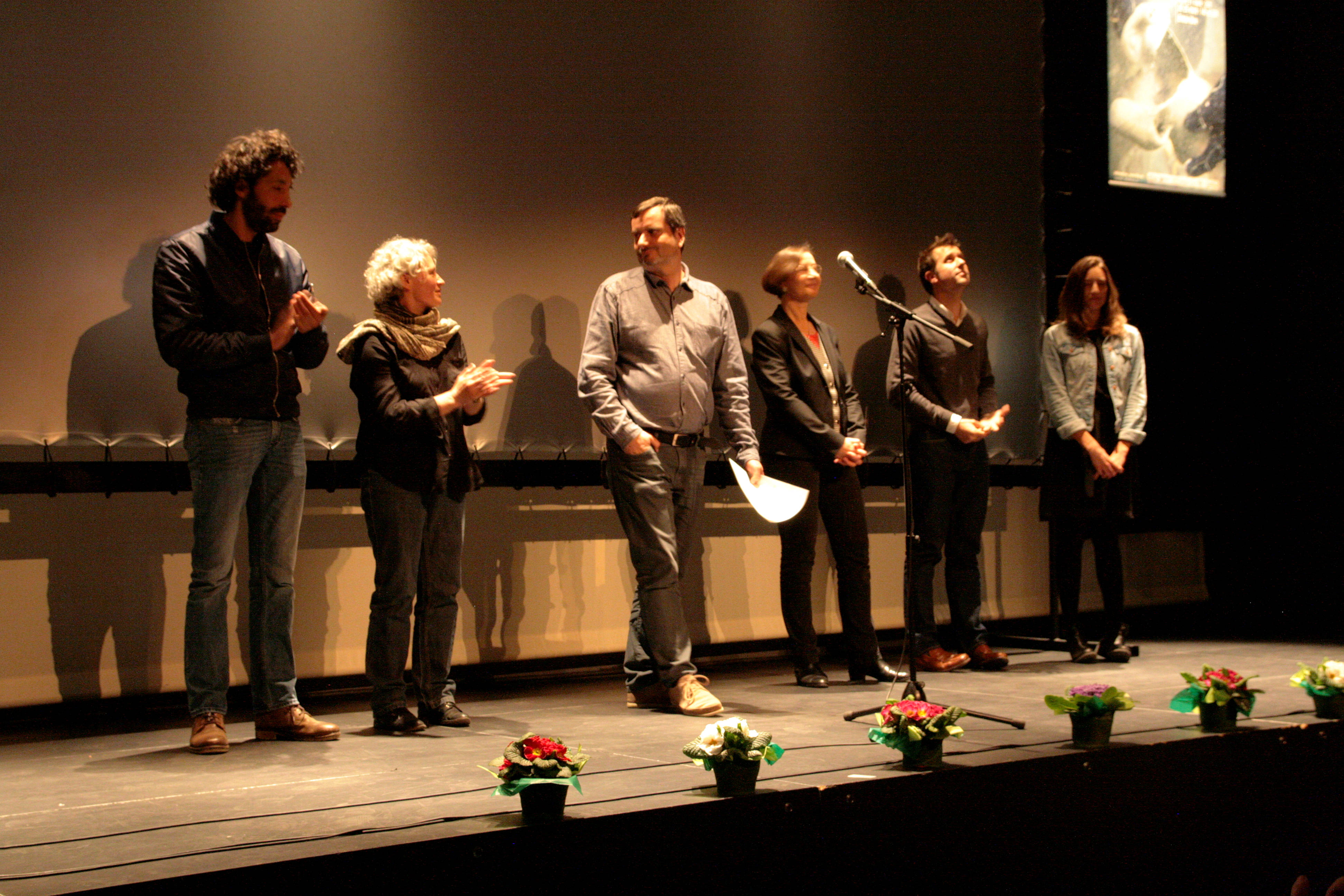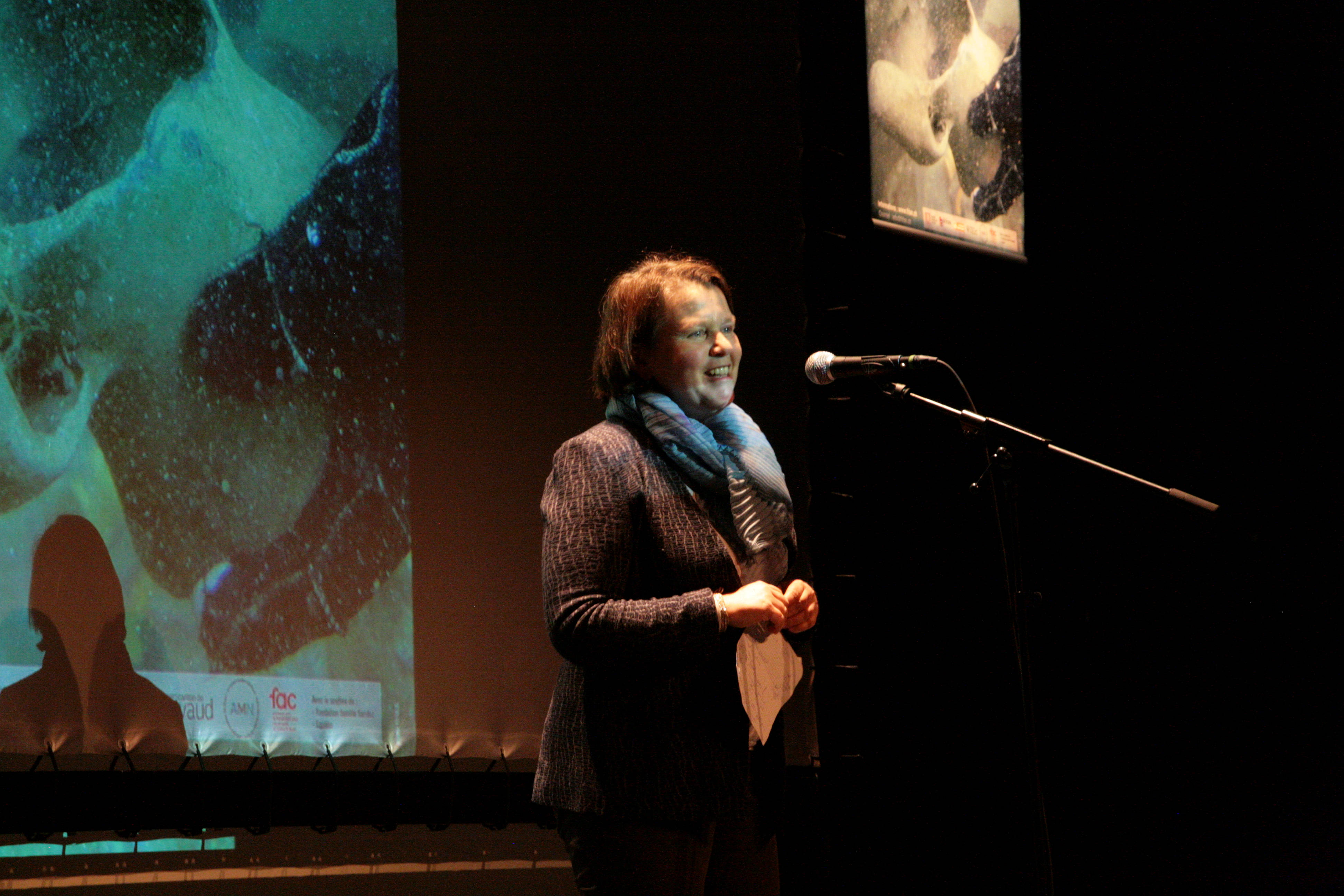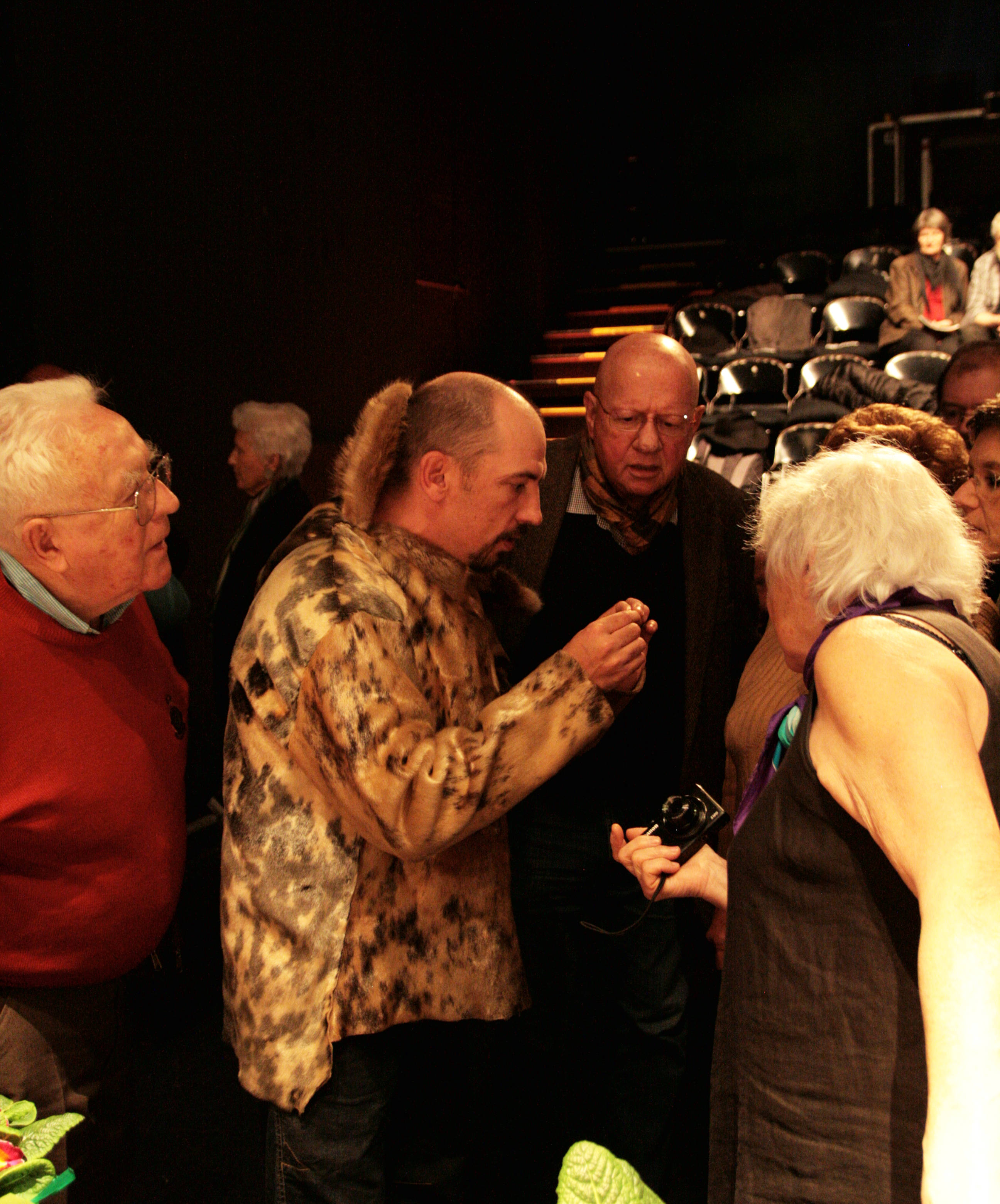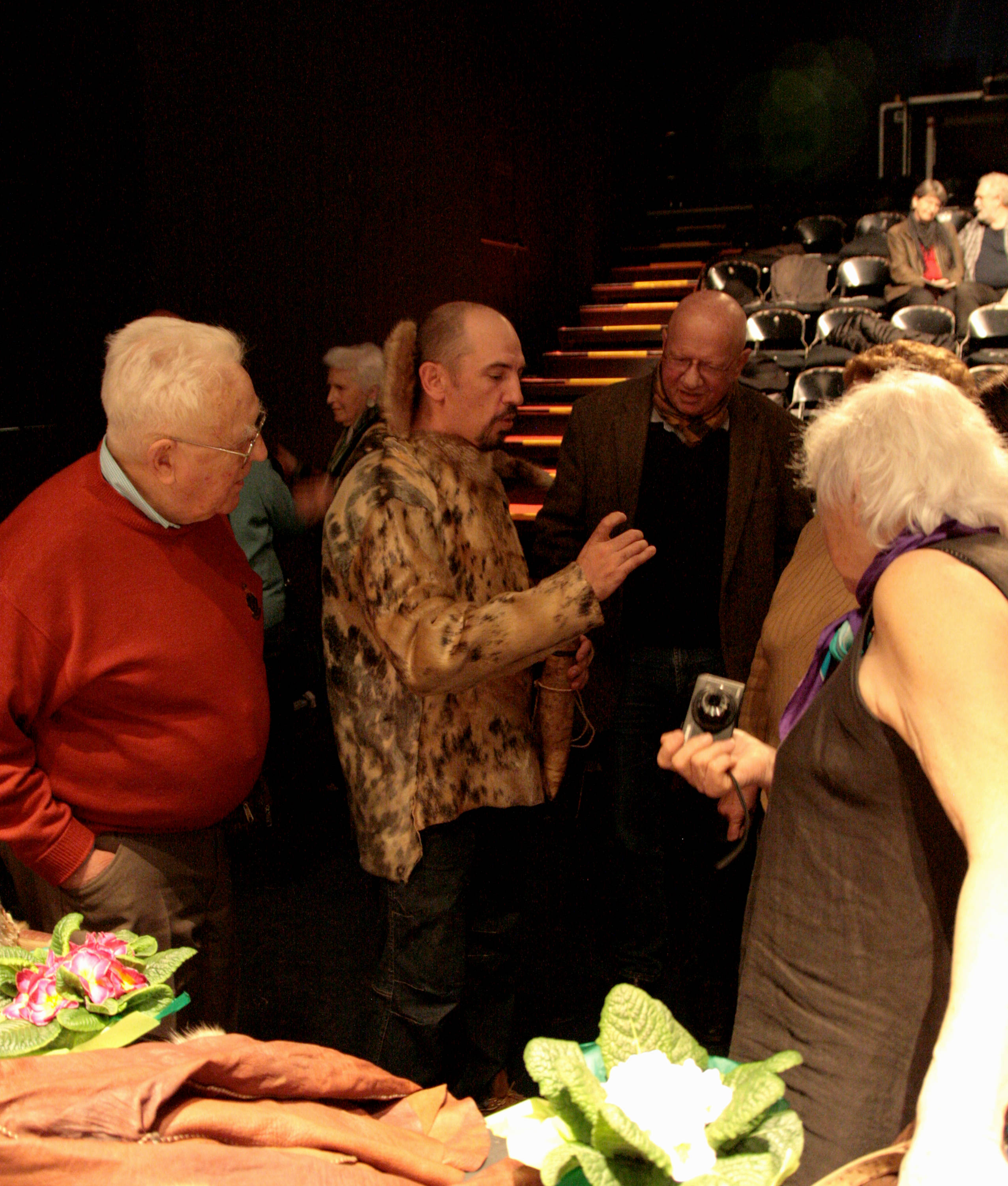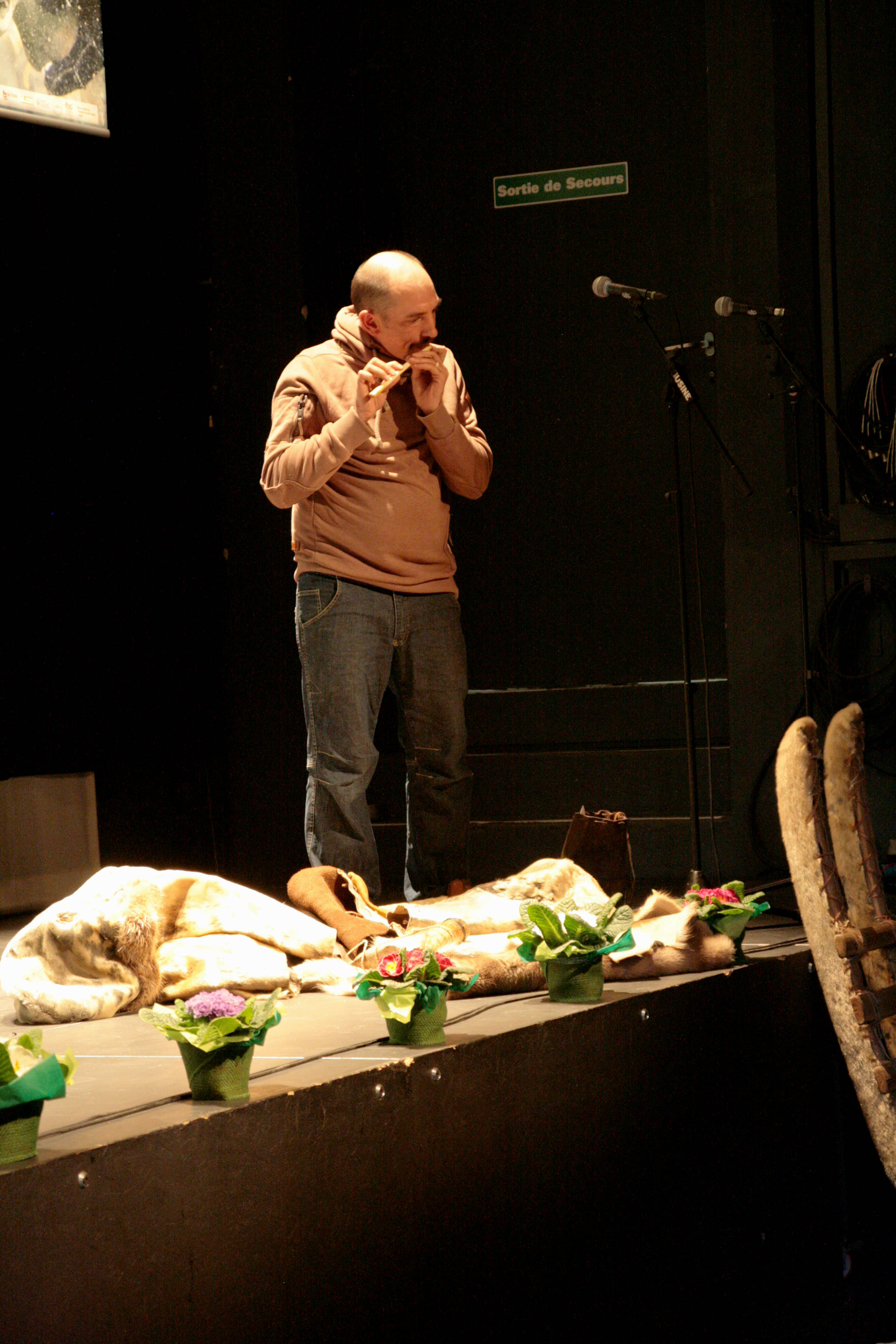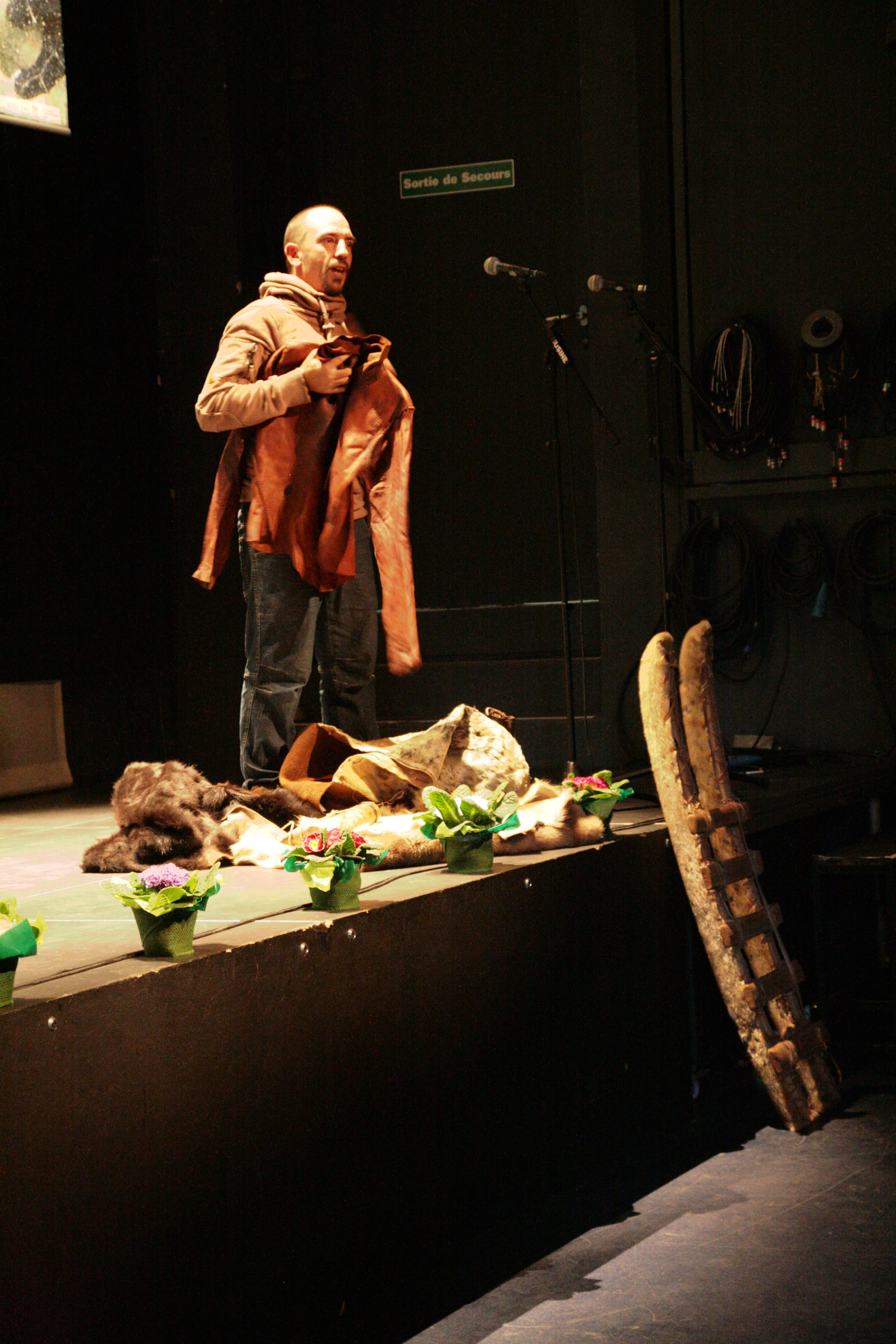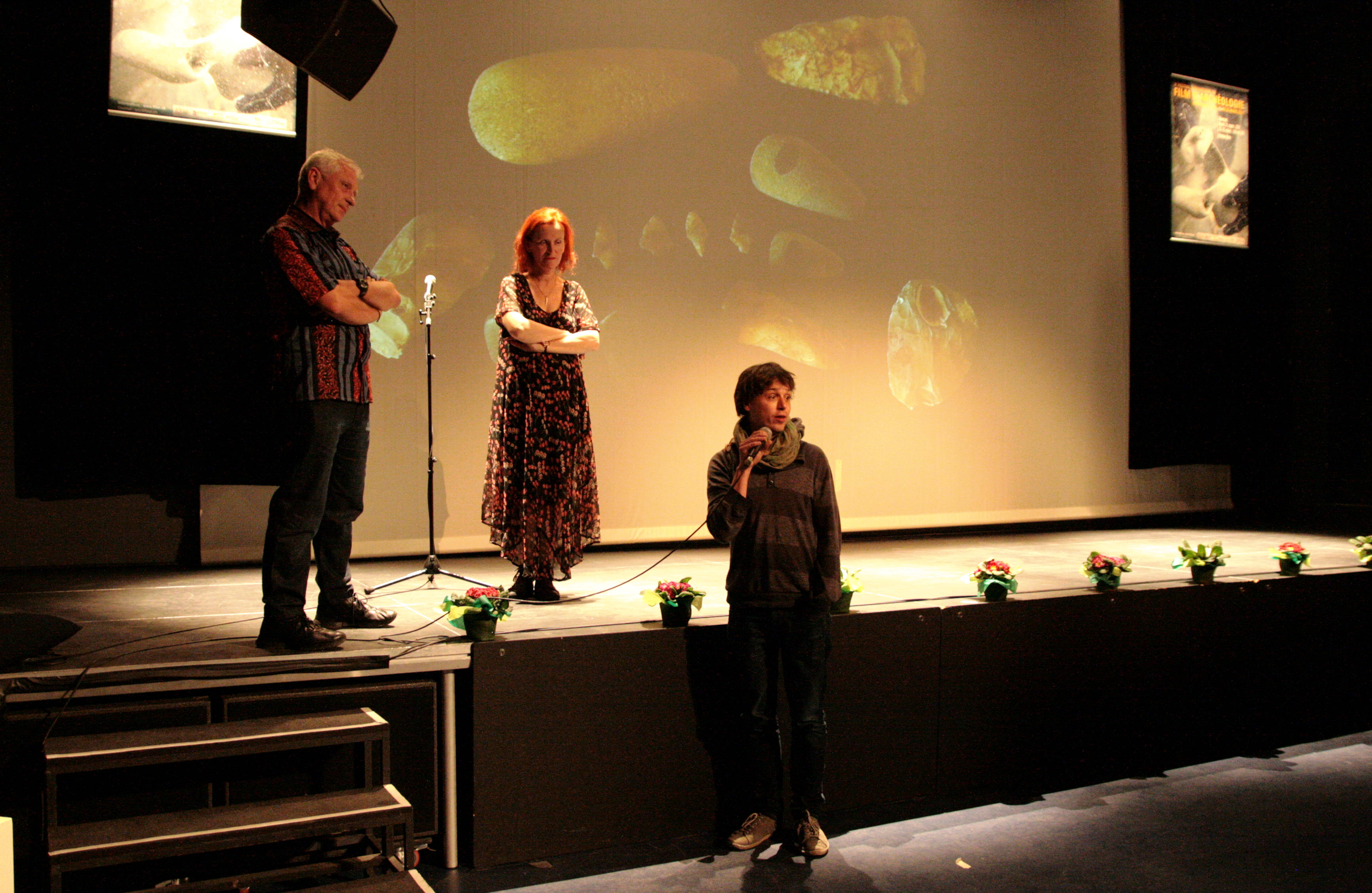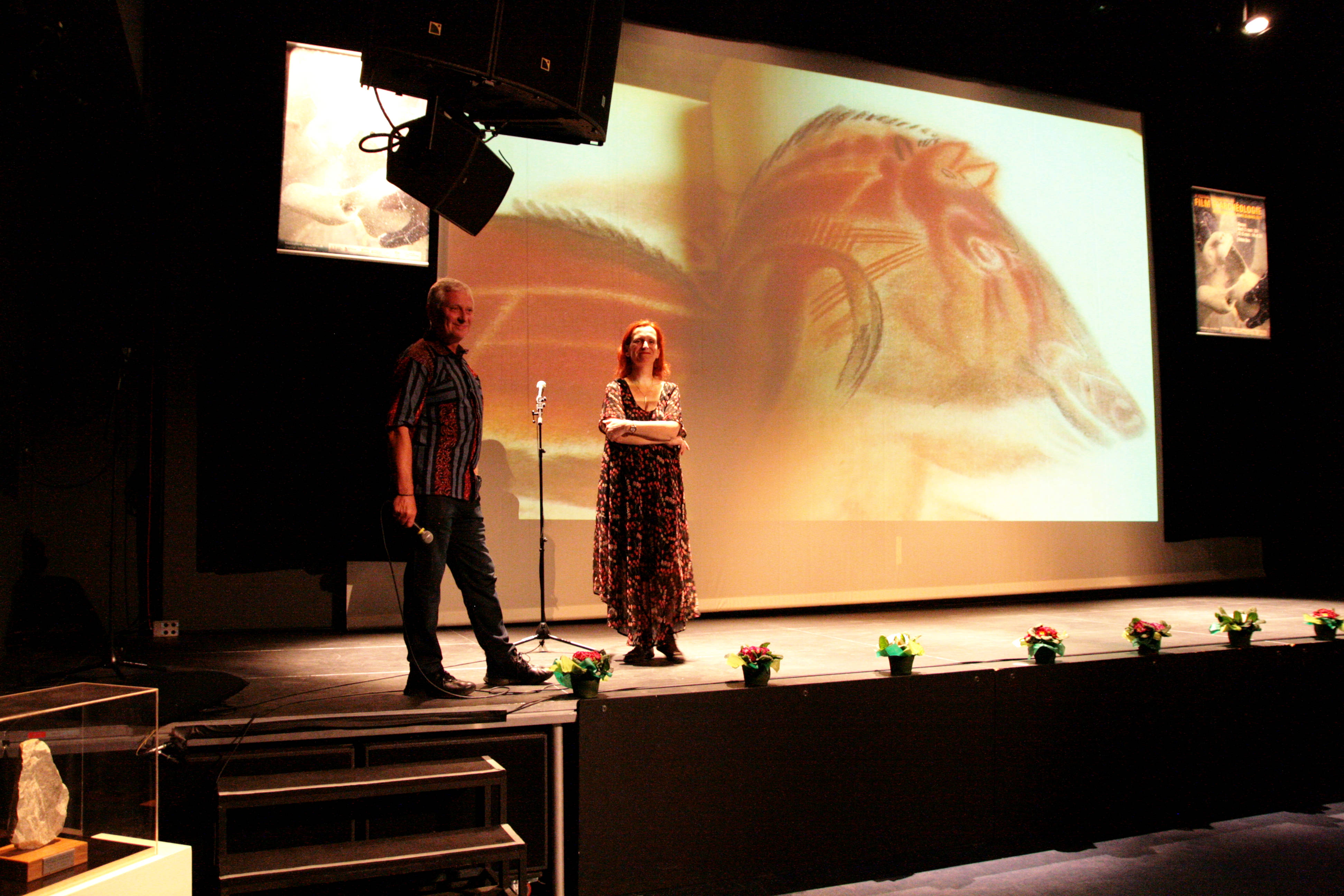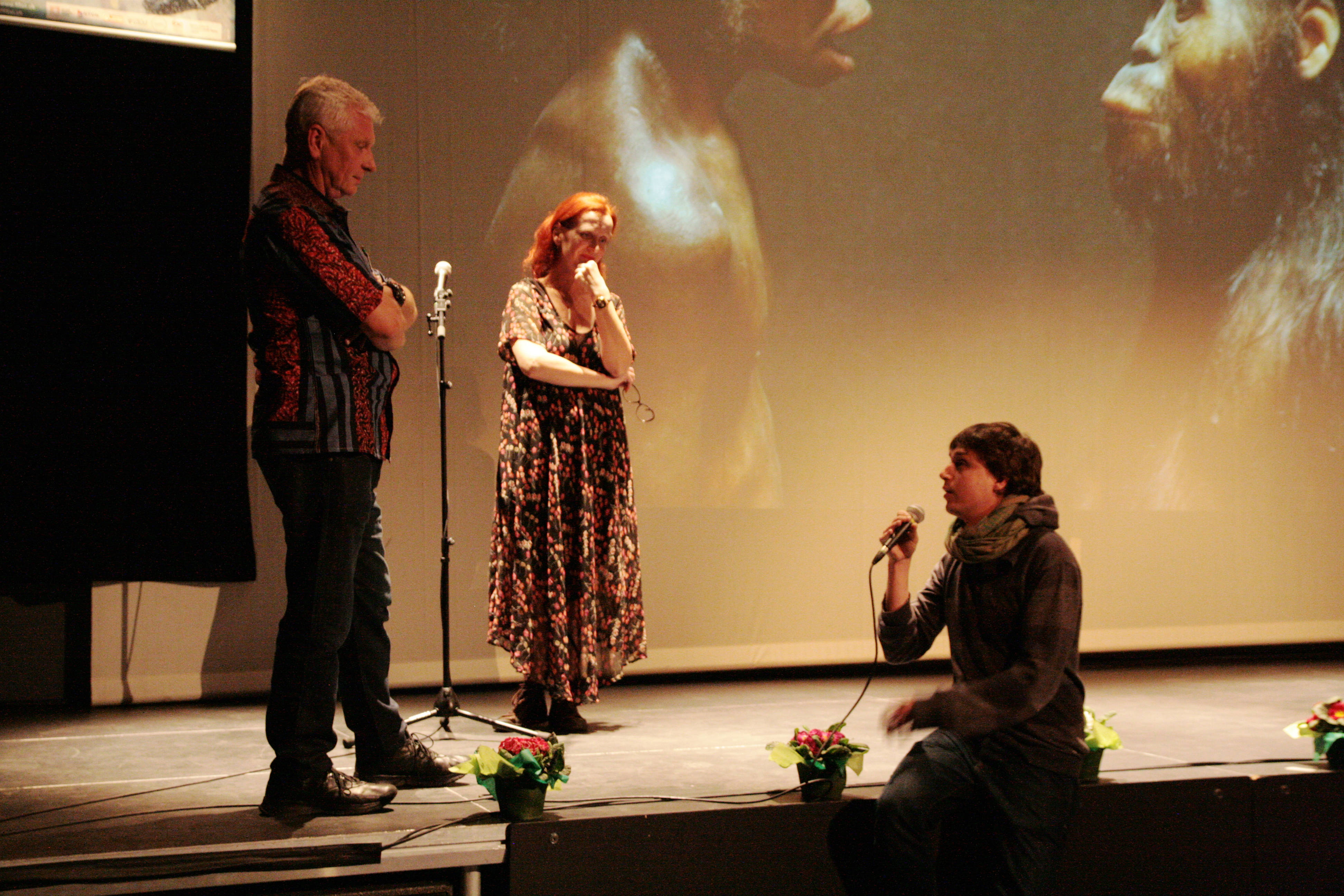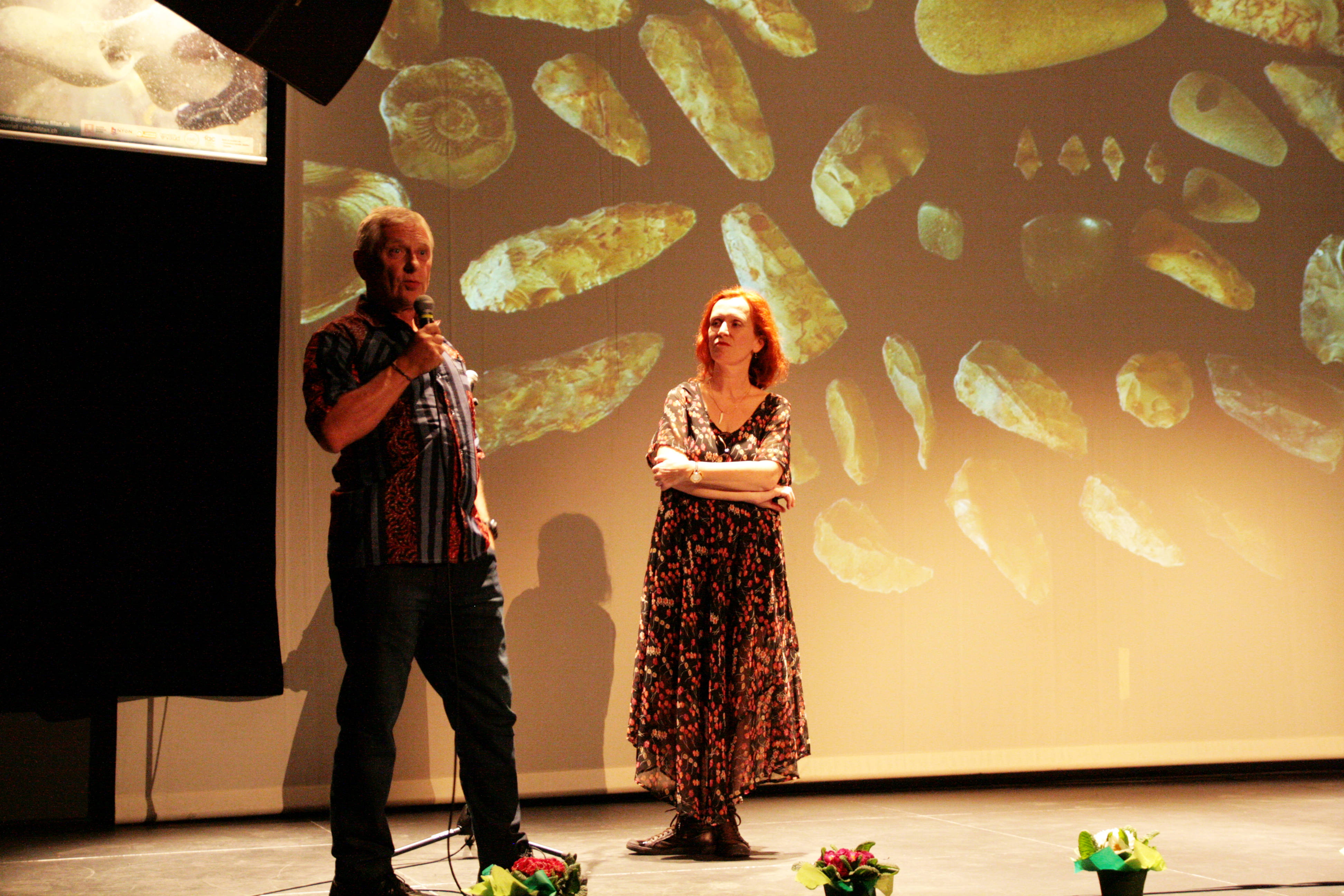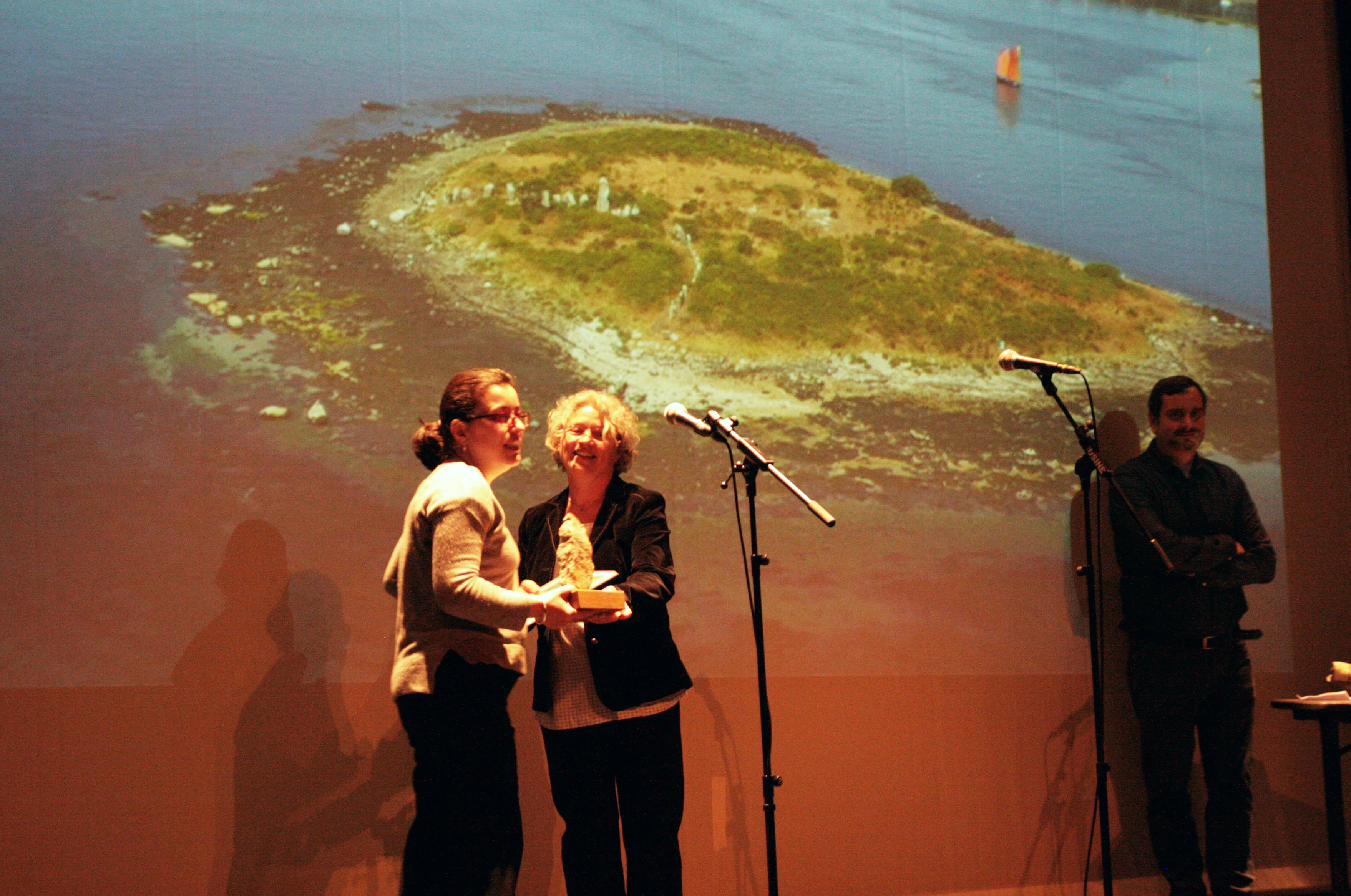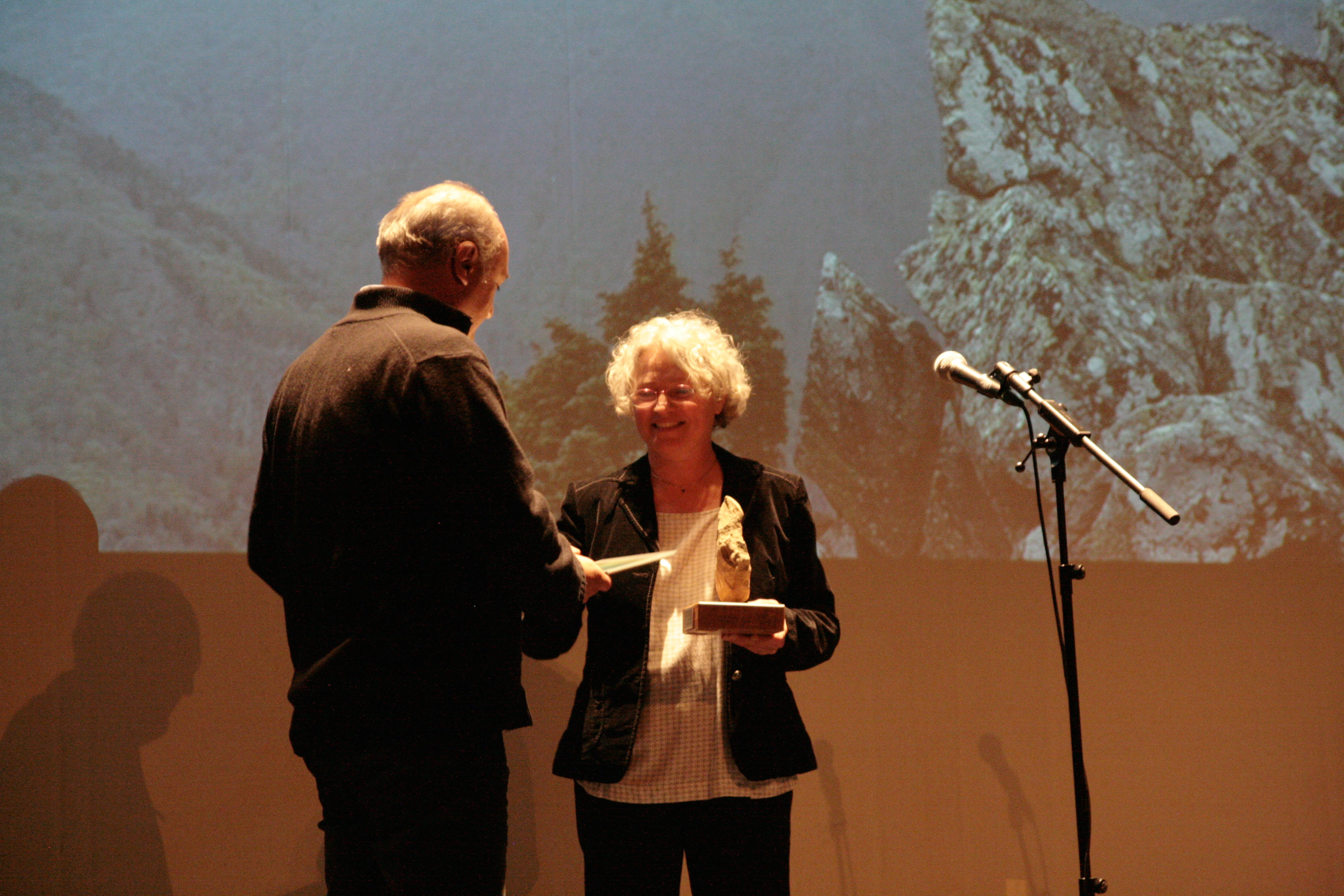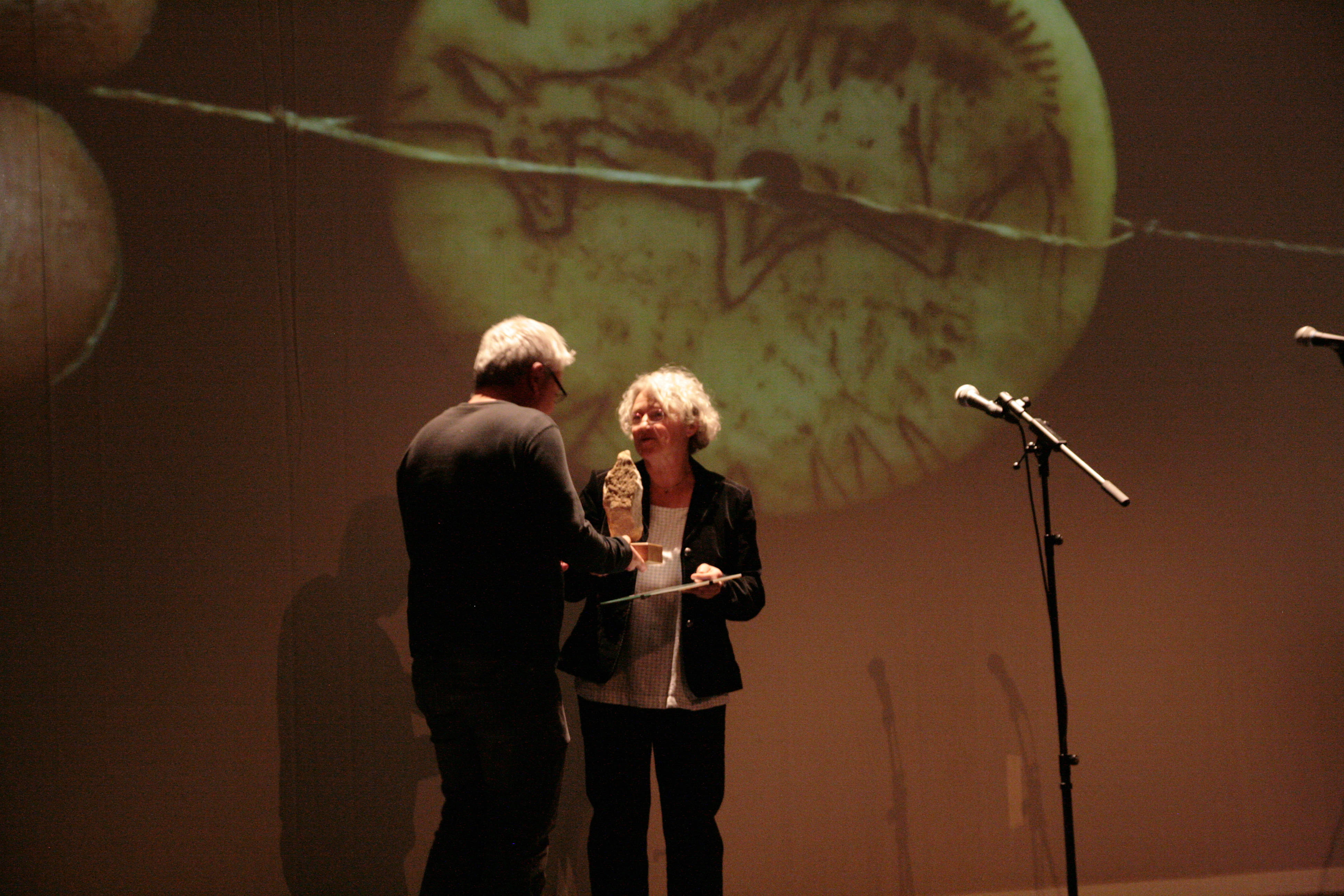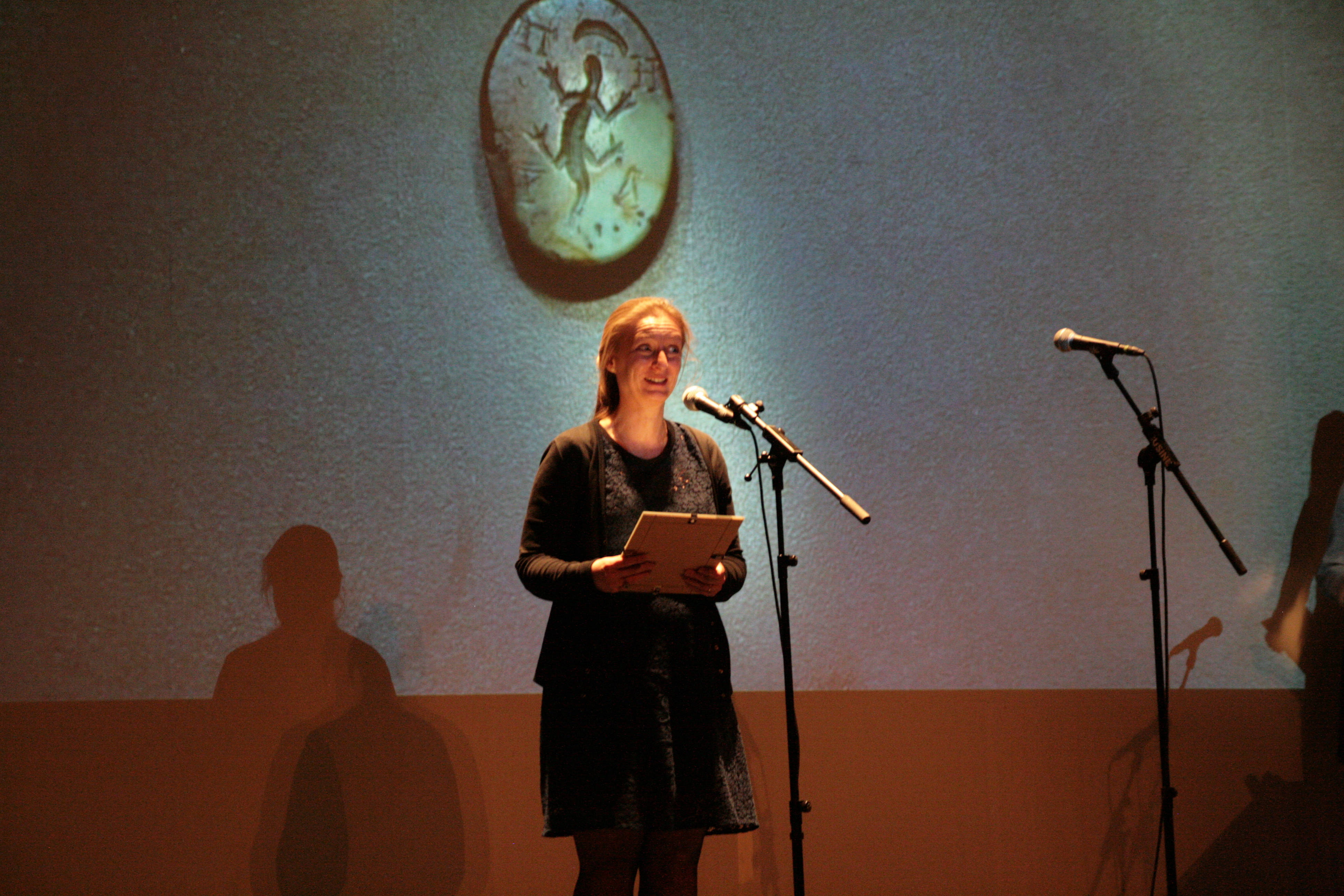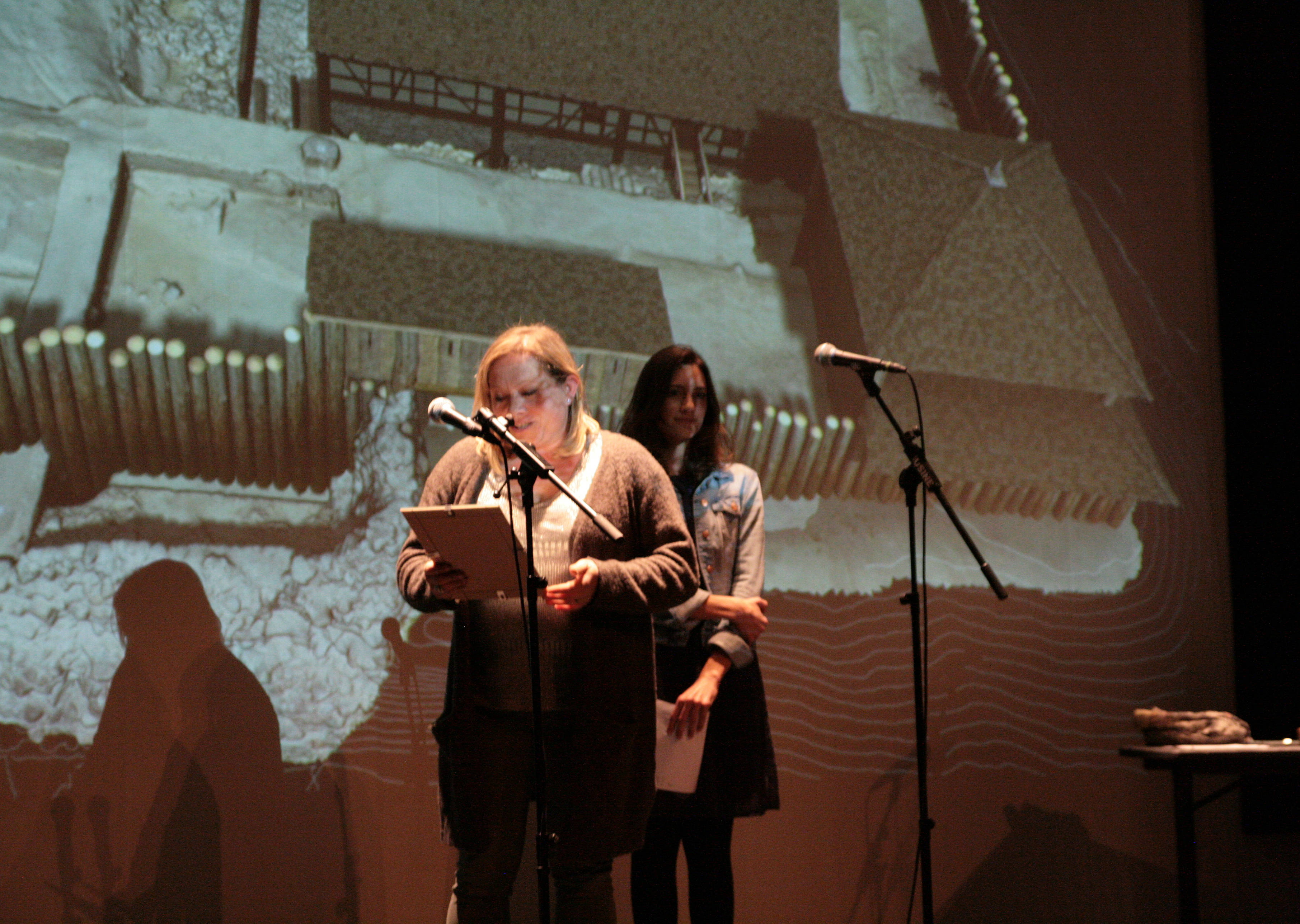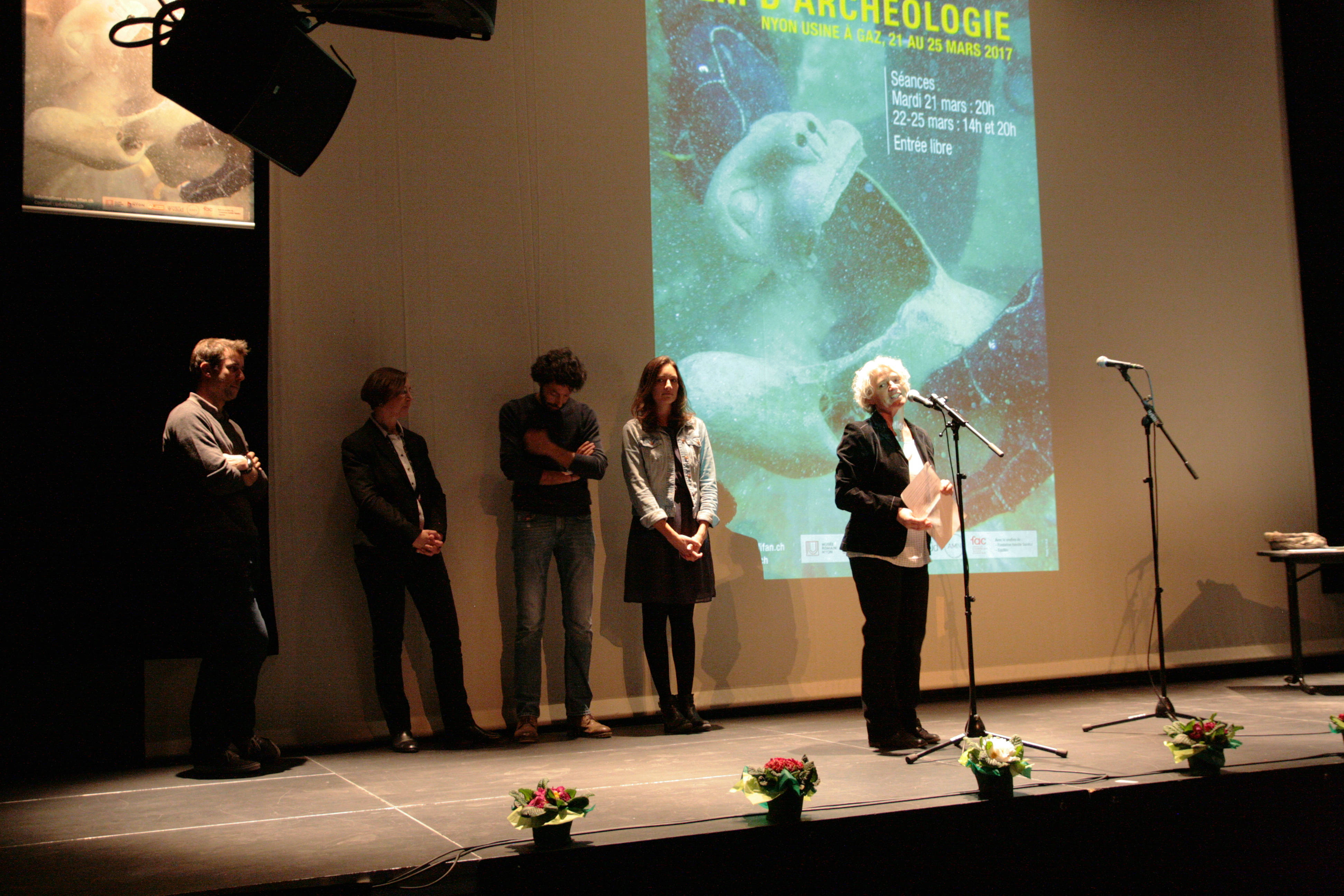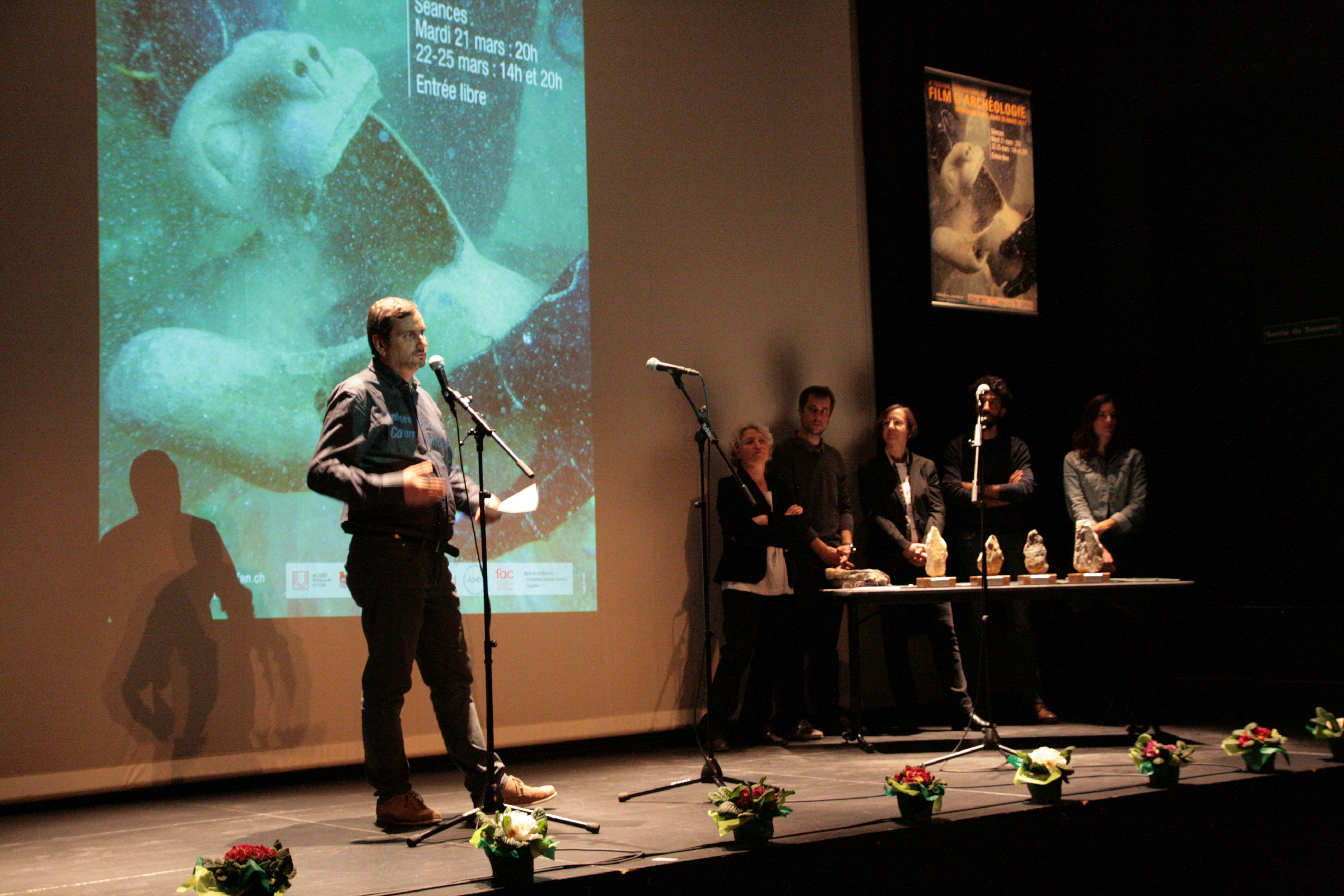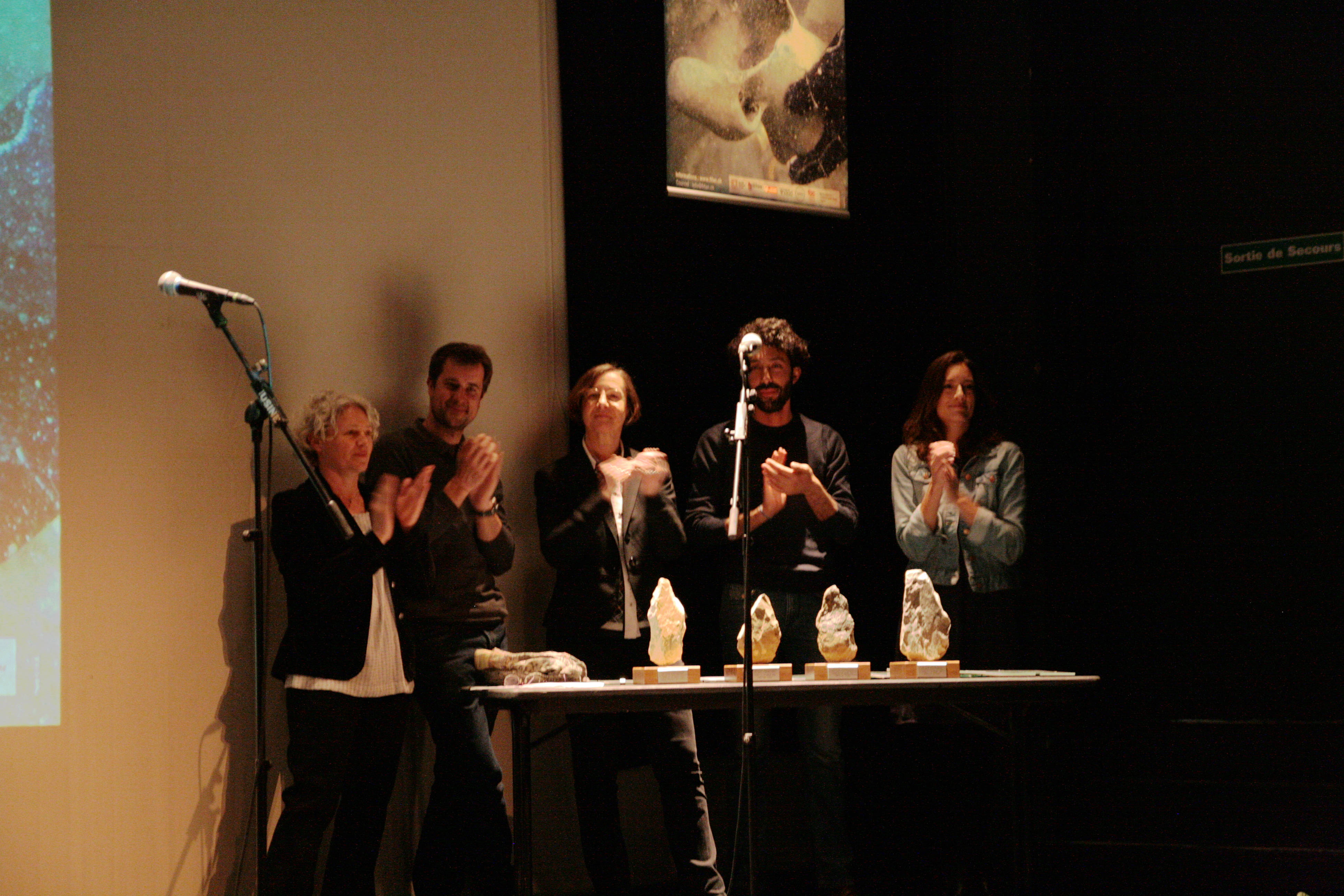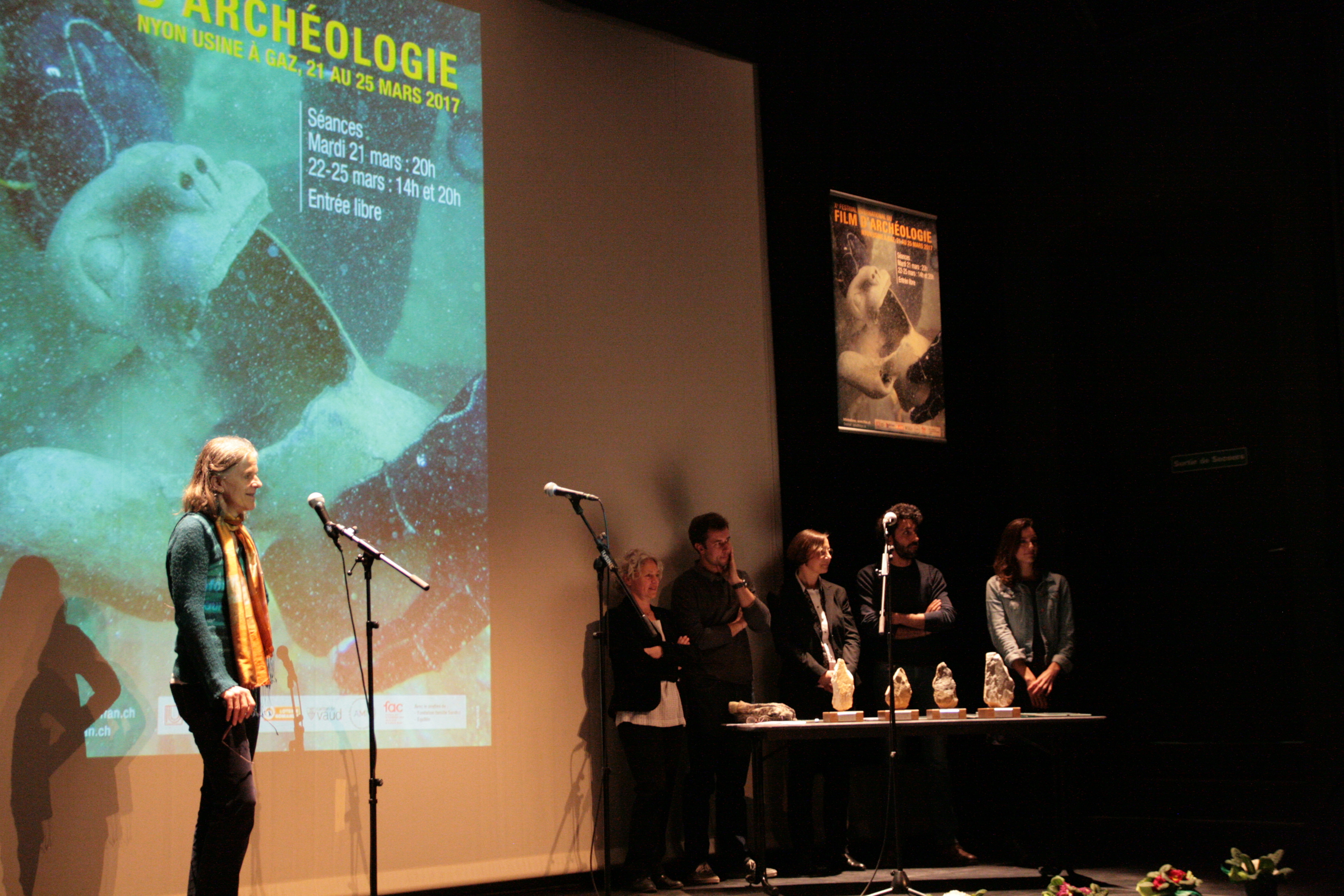[:fr]
Organisation: Musée romain
Directeur: Christophe Goumand
Le succès rencontré en 1999 a encouragé le Musée romain à recommencer et donner au festival un caractère régulier bisannuel. Nyon devient ainsi le premier rendez-vous helvétique des amateurs du cinéma d’archéologie, et rejoint d’autres festivals de ce type qui existent notamment en France (Bordeaux, Amiens), en Allemagne (Kiel), en Italie (Rovereto) ou en Belgique (Bruxelles).
Maria Longhena, de Bologne, spécialiste de la civilisation maya et auteur de nombreux ouvrages sur le sujet, a participé à la soirée de vendredi consacrée à l’archéologie de l’Amérique précolombienne.
Alix Barbet, responsable du Centre d’études des peintures murales romaines à Soissons et au Laboratoire d’archéologie de l’Ecole Normale Supérieure de Paris, a participé à l’après-midi consacré à la civilisation romaine et a présenté notamment le film sur Zeugma (Turquie), cité désormais engloutie par les eaux de l’Euphrate retenues par un barrage.
Les meilleures productions ont été récompensées par un jury de 5 personnes émanant tant des milieux archéologiques que de ceux liés au cinéma. Un prix du public a également été attribué.
Le palmarès
GRAND PRIX DU FESTIVAL ET PRIX DU PUBLIC
« La tombe du prince scythe », Grande-Bretagne, France, 52’, réalisation : Marc Jampolsky
Pour son aptitude à rendre compte, avec un remarquable sens du récit, d’une recherche de longue durée sur un sujet encore peu connu, dans un contexte décrit avec beaucoup de sensibilité, en soulignant le respect mutuel des équipes scientifiques engagées et la sympathie du regard porté sur le pays dans lequel se déroule ce travail.
PRIX SPÉCIAL DU JURY
« Les comportements alimentaires des hommes préhistoriques », France, 26’, réalisation : Denis Gerault
Pour sa capacité à synthétiser un sujet a priori difficile à traiter cinématographiquement. Pour la manière dont la narration est personnalisée à travers une caméra subtile, un montage attrayant et un humour peu fréquent dans un document destiné à des milieux spécialisés, qualités qui font qu’il peut aussi atteindre un plus large public.
PRIX DU MEILLEUR FILM À PETIT BUDGET :
« Bacchus et Ariane », France, 18’, réalisation : Jean Collinet et Frédéric Moroldo
Pour la manière dont l’image et les commentaires judicieux se conjuguent pour mettre en valeur une œuvre exceptionnelle dans le cadre d’une opération de sauvetage archéologique.
MENTIONS SPÉCIALES:
« L’homme de Concise ou la Suisse des Palafittes », Suisse, 46’, réalisation : Silvana Bezzola
Pour sa capacité à nous faire entrer dans le champ archéologique par les moyens du cinéma documentaire judicieusement utilisés.
« Les derniers jours de Zeugma », France, 52’, réalisation : Thierry Ragobert
Pour l’émotion avec laquelle sont montrées, de manière exemplaire, les splendeurs inouïes découvertes dans l’urgence d’une situation qui met en cause une fabuleuse partie de patrimoine culturel de l’humanité, en même temps qu’elle condamne les conditions d’existence de toute une population.
Le jury
Président du jury :
- M. Pierre Barde, producteur et réalisateur à la Télévision suisse romande.
Membres :
- M. Frédéric André, archéologue, directeur des journées du film d’archéologie du Musée de Mariemont, Belgique.
- M. Pierre Corboud, archéologue, département d’anthropologie de l’Université de Genève.
- Mme Regula Frei-Stolba, archéologue, professeur à l’Institut d’archéologie et d’histoire ancienne de l’Université de Lausanne.
- M. Majan Garlinski, ethnologue, conservateur au département d’anthropologie visuelle du Musée d’ethnographie de Genève.
[:en]
Organization: Roman Museum
Director: Christophe Goumand
The success encountered in 1999 encouraged the Roman Museum to renew the adventure and make the Festival a regular biennial event. Nyon thus became the first Swiss rendezvous for devotees of archaeological films and joined other similar festivals in France (Bordeaux, Amiens), Germany (Kiel), Italy (Rovereto) and Belgium (Brussels).
Mayan civilisation specialist and author of numerous works on the Mayas, Maria Longhena from Bologna, participated in the Friday evening session on the archaeology of Pre-Columbian America. Alix Barbet, in charge of the Centre for the Study of Roman Wall Paintings in Soissons and the Laboratory of Archaeology of the Ecole Normale Supérieure in Paris, took part in the afternoon session on Roman civilisation and presented the film about Zeugma (Turkey); the city now lies under the reservoir created by the damming of the River Euphrates. The best productions received awards from a five-person jury from the world of archaeology and the cinema. An audience award was also made.
The prize list
FIRST PRIZE AND AUDIENCE AWARD
“ La tombe du prince scythe” (The tomb of the Scythian prince), Great Britain, France, 52’, director: Marc Jampolsky
For the ability to render long-term research on a subject that is still little known with a remarkable sense of narrative, in a context described with great sensitivity, with emphasis on the mutual respect shown by the scientific teams involved and a sympathetic perception of the country where it was filmed.
SPECIAL JURY AWARD
“Les comportements alimentaires des hommes préhistoriques” (Eating habits of prehistoric man), France, 26’, director: Denis Gerault
For the ability to summarise a subject a priori difficult to deal with in cinematographic terms. For the way in which the narrative is personalised by the use of subtle camera work, attractive montage and a sense of humour rarely encountered in a document intended for specialists; these qualities also make this film accessible to a wider public.
AWARD FOR THE BEST LOW-BUDGET FILM
“Bacchus et Ariane” (Bacchus and Ariadne), France, 18’, directors: Jean Collinet and Frédéric Moroldo
For the way in which the images are combined with judicious comments to showcase an exceptional work of art in the context of an archaeological rescue operation.
SPECIAL MENTIONS
“L’homme de Concise ou la Suisse des palafittes” (Concise man or the Switzerland of the pile-dwellers), Switzerland, 46’, director: Silvana Bezzola
For the ability to introduce us into the world of archaeology by the judicious use of the means furnished by the documentary film
“Les derniers jours de Zeugma” (The last days of Zeugma), France, 52’, director: Thierry Ragobert
For the emotion shown in revealing in exemplary fashion the unheard-of wonders discovered in extremis in a situation that raises the issue of the destiny of a fabulous part of the cultural heritage of mankind while simultaneously condemning the conditions of existence of an entire population.
The jury
Chairman
- Pierre Barde, producer and director, Télévision suisse romande
Members
- Frédéric André, director of the archaeological film workshops of the Musée de Mariemont, Belgium
- Pierre Corboud, archaeologist, Department of Anthropology, University of Geneva
- Regula Frei-Stolba, archaeologist, professor at the Institute of Archaeology and Ancient History, University of Lausanne
- Majan Garlinski, ethnologist, curator of the Department of Visual Anthropology of the Museum of Ethnography, Geneva
[:de]
Organisation: Römisches Museum
Direktor: Christophe Goumand
Der Erfolg im Jahr 1999 hat das Römische Museum dazu ermutigt, das Abenteuer zu wiederholen und das Festival von jetzt an alle zwei Jahre abzuhalten. Nyon ist dadurch zum ersten schweizerischen Treffpunkt für Anhänger der archäologischen Filme geworden und schliesst sich einer Reihe von anderen gleichartigen Festivals in Frankreich (Bordeaux, Amiens), Deutschland (Kiel), Italien (Rovereto) und Belgien (Brüssel) an.
Maria Longhena, Spezialistin der Maja-Kultur und Autorin mehrerer Bücherer über dieses Thema, beteiligte sich am Freitag Abend an der Vorstellung über die Archäologie des präkolumbianischen Amerikas.
In der Nachmittagsvorstellung über die römische Kultur stellte Alix Barbet, verantwortlich für das Forschungszentrum für römische Wandmalereien in Soissons und das Archäologielabor der Ecole Normale Supérieure Paris, einen Film über die Stadt Zeugma (Türkei) vor, die bei der Stauung des Euphrats von seinen Fluten verschlungen wurde.
Die besten Produktionen wurde von der Jury, die von fünf Mitgliedern aus der Welt der Archäologie und des Films gebildet wurde, mit einem Preis ausgezeichnet. Ausserdem wurde ein Publikumspreis vergeben.
Die Preisträger
ERSTER PREIS UND PUBLIKUMSPREIS
“La tombe du prince scythe” (Das Grab des skythischen Prinzen), Grossbritannien, Frankreich, 52′, Regisseur: Marc Jampolsky
Der erste Preis wurde für den Sinn für Erzählung vergeben, mit dem der Regisseur die Langzeitforschungen über ein immer noch wenig bekanntes Thema schildert. Er beschreibt den Kontext mit viel Einfühlungsvermögen, wobei er insbesondere den gegenseitige Respekt zwischen den verschiedenen wissenschaftlichen Teams hervorhebt und einen verständnisvoller Einblick in das Land gibt, in dem der Film gedreht wurde.
JURY-SPEZIALPREIS
“Les comportements alimentaires des hommes préhistoriques” (Das Essverhalten der prähistorischen Menschen), Frankreich, 26′, Regisseur: Denis Gerault
Dieser Film wurde aus mehreren Gründen prämiert: Zunächst einmal hat der Regisseur die Fähigkeit bewiesen, ein Thema zusammenzufassen, das a priori nicht besonders für Filme geeignet ist. Die subtile Kameraführung, der attraktive Schnitt und ein Sinn für Humor, der in einem Dokument für Fachleute doch eher selten ist, geben der Erzählung eine persönliche Note. Daher ist der Film auch für ein breites Publikum geeignet.
PREIS FÜR DEN BESTEN LOW-BUDGET-FILM
“Bacchus und Ariane” (Bacchus und Ariadne), Frankreich, 18′, Regisseure: Jean Collinet und Frédéric Moroldo
Das Zusammenspiel zwischen Bild und klugem Kommentar, das ein ausserordentliches Kunstwerk in einer archäologischen Rettungsaktion in Szene setzt, macht diesen Film einzigartig.
BESONDERE AUSZEICHUNGEN
“L’homme de Concise ou la Suisse des palafittes” (Der Mann aus Concise oder die Schweiz der Pfahlbauer), Schweiz, 46′, Regisseur: Silvana Bezzola
Die Regisseurin dieses Films wurde für ihre Fähigkeit prämiert, uns durch den geschickten Einsatz der Mittel einer Dokumention in die Welt der Archäologie zu entführen.
“Les derniers jours de Zeugma” (Die letzten Tage von Zeugma), Frankreich, 52′, Regisseur: Thierry Ragobert
Die Auszeichnung diese Films wurde in erster Linie für die Emotionen vergeben, die bei dieser beispielhaften Enthüllung von unbekannten Wundern hochgekocht sind. Die Objekte wurden unter extremen Umständen gefunden, die Fragen nach dem Schicksal eines sagenhaften Teils des menschlichen Kulturerbes aufwerfen, während sie gleichzeitig die Lebensbedingungen eines gesamten Volkes verurteilen.
Die Jury
Vorsitz
- Pierre Barde, Produzent und Regisseur, Télévision suisse romande
Mitglieder
- Frédéric André, Direktor der archäologischen Filmtage des Musée de Mariemont, Belgien
- Pierre Corboud, Archäologe, Institut für Anthropologie, Universität Genf
- Regula Frei-Stolba, Archäologin, Professorin im Institut für Archäologie and Antike Geschichte, Universität Lausanne
- Majan Garlinski, Ethnologe, Konservator der Abteilung für Visuelle Anthropologie des Ethnographischen Museums, Genf
[:]





